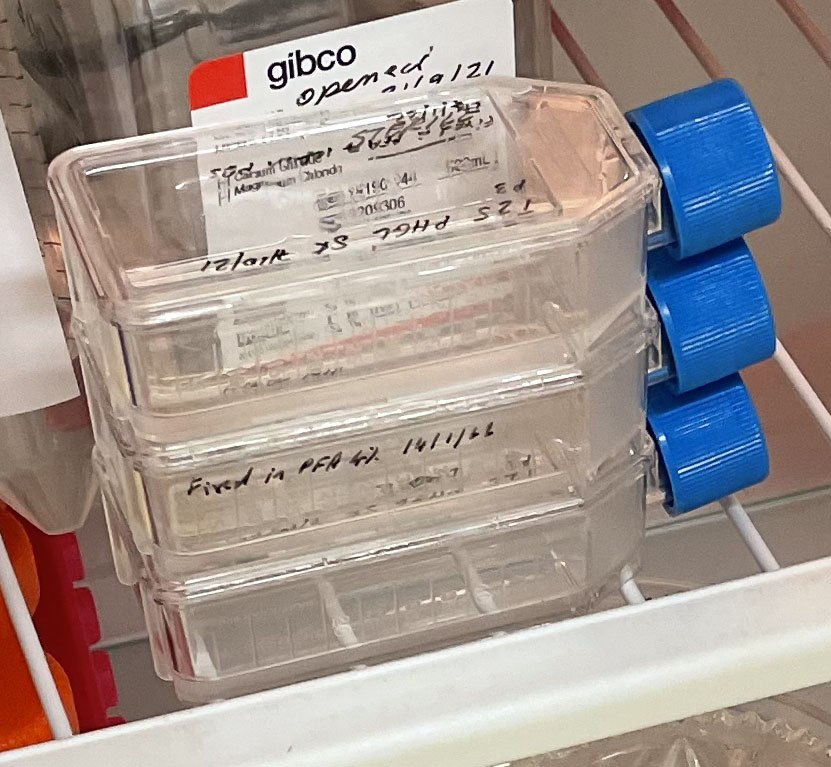I think I can officially label myself a hoarder of materials – I never want to let anything go in case it may be creatively useful or yield something. As such, I have been maintaining most of my passage flasks hoping for cell survivors (and, if I’m honest, spontaneous mutation and cell immortalisation).
Today the time has come to let go of some of my flasks. I am building up to the task, so will start with some of my smaller flasks – the T25s.
Following the standard fixation protocol in 4% PFA, I’ve prepared them for staining with H&E. It will be interesting to see if there were any remaining cells and if the ‘ghost trails’ stain with Eosin.
 Three T25 PHGL Tumour Baby Flasks fixed with 4% PFA in PBS ready for staining.
Three T25 PHGL Tumour Baby Flasks fixed with 4% PFA in PBS ready for staining.
I have returned from the festive season break and started back in the lab.
Let’s start with the good news! There is no visible infection in any of the vessels including cut glass dishes and vials. My flasks are doing OK and there are cells actively growing (despite evidence of cell death indicated by cell debris).
Now for the bad news…
There has been mass death. Despite the slow growth rates of my cells, 3 weeks is just too long to leave cells starving and without ongoing maintenance. That said, there is evidence (in cell debris) that a good number of cells did grow in the vessels during my absence. This shows that the overall plan should work.
The plan for today is:
- Make up new media and FBS aliquots.
- Feed cells (i.e. replace media with fresh solution)
- Remove dead cells from all cut glass dishes.
- Collect dead cells via centrifugation and fix in PFA.
- Fix cells in some of the older flasks, fix in PFA and stain with H&E.
If I have time, I will also:
- Bleach and wash glassware and prepare for autoclaving.
- Autoclave glassware.
Recipient of ANAT Synapse Residency 2021
 Three T25 PHGL Tumour Baby Flasks fixed with 4% PFA in PBS ready for staining.
Three T25 PHGL Tumour Baby Flasks fixed with 4% PFA in PBS ready for staining. 